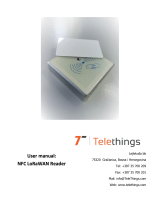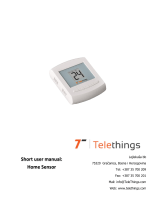
5
Figure 6. LoRa JOIN procedure graphical representation
2.2. LORA JOIN PROCEDURE FOR RECEIVING SWITCH MODULE
After the device is being turned on, red LED will turn on. After ten seconds, JOIN procedure
with the server will initiate. If the JOIN procedure has been successful, both red and green LEDs will
blink three times and then the red LED will stay turned ON while green one will turn off.
Red LED is an indicator of successful JOIN procedure and if it's on, it means that procedure
has finished successful. If red LED continues blinking, it means that JOIN procedure has failed.
Green LED is an indicator of relay state and if it's on, it means that the relay is turned on.
After the device has successfully finished the JOIN procedure, it can send and receive
messages from the server.
2.3. RECOMMENDATION FOR USE
Due to the relevance and validity of
measurement and regulation, wireless thermostat
should not be installed near heat sources, such as
radiators, furnaces, refrigerators and other objects
which can emit heat in their immediate vicinity.
Also, for the same reason, Home Sensor should
not be installed near windows or entrance doors. It's
not recommended to install devices (Home Sensor
and Control Box) on unstable surfaces, or surfaces
which are exposed to vibrations, due to a possible fall of device and physical damage. Keep devices
as far as possible from impact of high humidity and liquid sources due to a possible damage of
device's electronic components. Keep the device out of reach of children.











